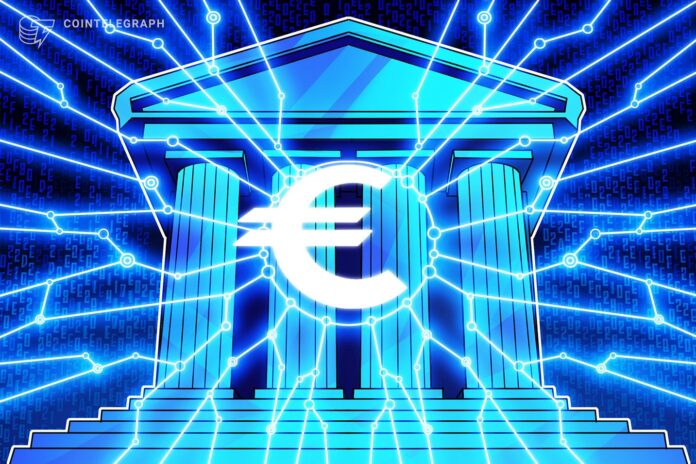As various stakeholders in the European Union continue to research the potential of a single central bank digital currency (CBDC), representatives of both private and public banking institutions share their opinion on the digital euro.
In a new issue of the biannual Views magazine published in April, the topic of the digital euro received a heavy amount of attention from a number of speakers.
Evelien Witlox, the program director for the digital euro at the European Central Bank (ECB), lays out three use cases prioritized by the ECB. These are person-to-person payments made between individuals; consumer-to-business payments, including e-commerce and purchases made in a physical shop; and payments to or by the government.
The use cases are a sensitive area to private bankers. As Jerome Grivet, the deputy CEO at French bank Crédit Agricole, stated:
“Central bank digital money could threaten the traditional banks’ business model by competing with their collection activity and disrupting their financing capacity.”
Grivet insists that to avoid this, the digital euro should be limited to use as a payment method rather than a store of value. That is something Burkhard Balz, a member of the executive board at Deutsche Bundesbank, agrees with. Balz underscores that the ECB and national central banks should avoid extending their footprint in the ecosystem too much, with the private sector running the distribution of the digital euro. The economic incentives, in Balz’s opinion, are essential to involve the intermediaries:
“They should, therefore, not consider the provision of digital euro services as a sort of obligation but should explore the economic potential by developing and competing for creative solutions.”
Another side of the project that should be considered in using the CBDC is the customers. It is difficult to predict how customers will react to this new form of central bank money and to what extent the general public will adopt it, Grivet says, citing a not-so-successful example of Chinese digital yuan adoption. The ECB’s Witlox is aware of this concern and promises that the CBDC will be user-friendly and take on board those who cannot afford a credit card or don’t have a bank account:
“In line with its public good nature, a digital euro would also be basically free.”
As to the potential issues with anonymity, Witlox claims the ECB has no interest in users’ personal data and is considering solutions to preserve privacy by default and design.
Related: What’s next for EU’s crypto industry as European Parliament passes MiCA?
The magazine also contains several interviews with American and Asian officials on the prospects of crypto regulation in general.
For example, Kristin Johnson, commissioner of the United States Commodity Futures Trading Commission, remarks that the digital economy needs to be adjusted to the same regulatory standards as in traditional finance, which she believes to be effective. Johnson also repeats the variation of the “blockchain, not crypto” motto, doubting the “extent of the relationship” of all the potential benefits of distributed ledger technology and private cryptocurrencies.
Tomoko Amaya, vice minister for international affairs at the Financial Services Agency of Japan (FSA), speaks about the vulnerabilities of “self-proclaimed stablecoins,” liquidity and maturity mismatches, excessive leverage, misuse of client assets and conflicts of interest. Amaya gives the example of her country’s strict regulation as successful, stressing the importance of a tight international framework.
On April 24, the ECB released its third progress report on digital euro design. It features onboarding by payment service providers, touchless in-store sales, and online and cross-border functionalities. Published several days earlier, an analytical paper by the European Parliament’s Committee on Economic and Monetary Affairs has given the digital euro a mixed review, warning about the possible disruptive effects of the project.
Magazine: Does SEC Chair Gary Gensler have the final say?
Hits: 0










